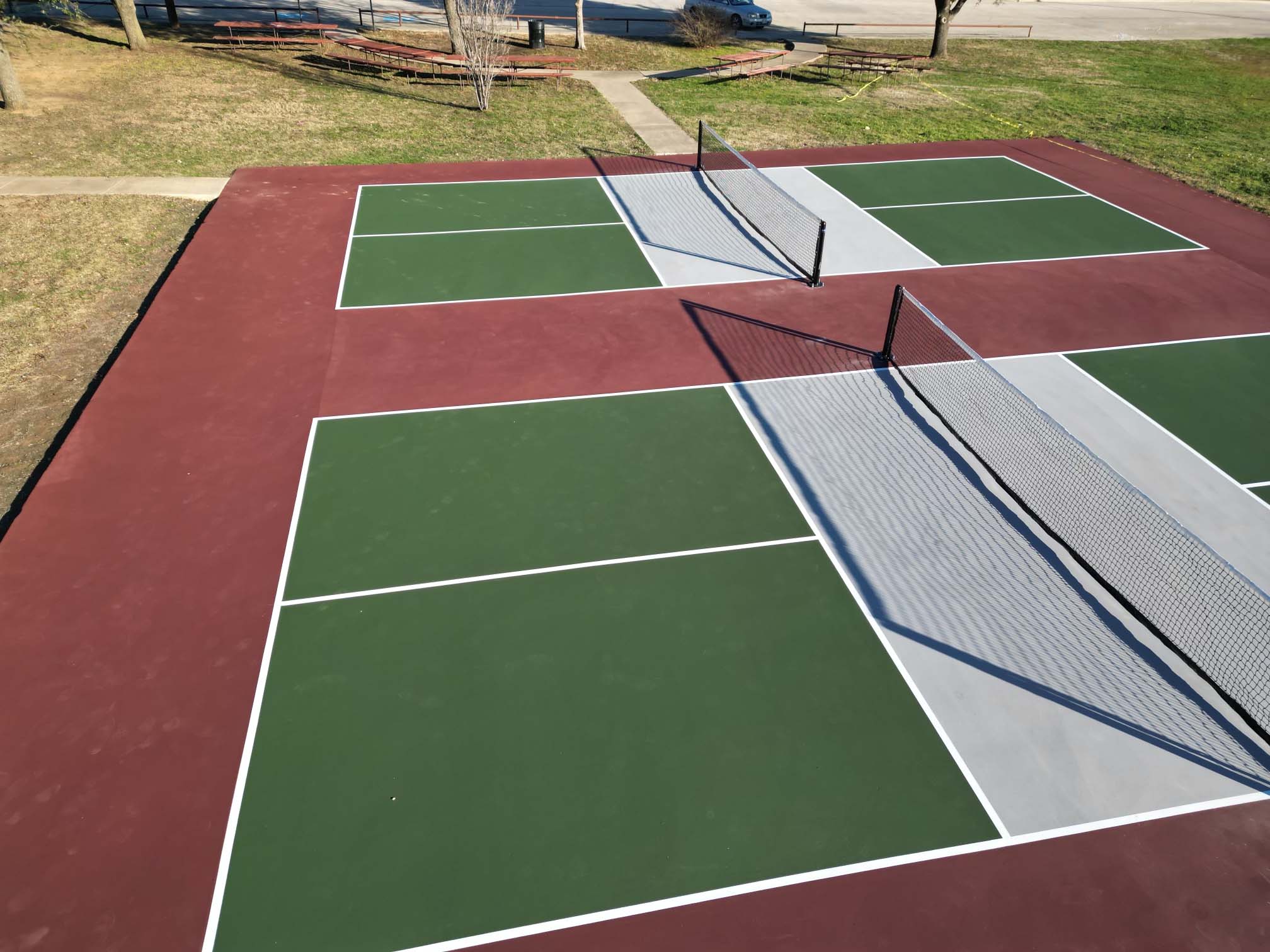Constructing a Pickleball Court Construction-- Professional Construction for Top Quality Play
Constructing a Pickleball Court Construction-- Professional Construction for Top Quality Play
Blog Article
Lasting Practices in Pickleball Court Building And Construction You Must Know
As the popularity of pickleball continues to increase, so also does the demand for lasting methods in court construction. The effect of these techniques extends much beyond the court itself.
Selecting Eco-Friendly Materials
Selecting green materials is a vital action in the building of lasting pickleball courts. The choice of lasting products not only lessens ecological impact but additionally boosts the durability and performance of the court. Trick materials include reused rubber for the surface, which provides excellent durability and shock absorption while drawing away waste from landfills.
Additionally, using locally sourced products decreases transport discharges and supports local economic situations. Pickleball court construction. Utilizing native hardwoods for fencing and seats can supply a sustainable aesthetic while ensuring strength against the aspects.
Including permeable materials for court foundations can better add to sustainability by permitting all-natural water drain and reducing runoff. These options not just safeguard regional ecological communities but also promote healthier play environments.
Reliable Drainage Solutions
While the option of green products is essential, executing effective water drainage remedies is just as essential for keeping lasting pickleball courts. Appropriate drain not only safeguards the court surface from water damage yet additionally minimizes erosion and overflow, advertising ecological integrity.
Reliable water drainage systems can include permeable paving, which enables water to penetrate the ground as opposed to merging externally. This lowers the possibility of standing water, which can cause mold and various other maintenance issues. In addition, integrating purposefully positioned water drainage channels and swales can guide excess water away from the court location, making sure a dry having fun surface and protecting against soil disintegration.
Using indigenous greenery in the landscape design around the courts can better boost water drainage by taking in excess water and decreasing runoff. These plants call for less irrigation and promote biodiversity, aligning with sustainable methods.
In addition, it is important to regularly maintain the water drainage system to guarantee its lasting efficiency. This includes clearing up particles and surveillance for obstructions. By prioritizing effective water drainage solutions, pickleball court builders can considerably add to the sustainability and longevity of the center, ultimately benefiting both players and the environment.
Energy-Efficient Illumination Options
As the need for pickleball continues to grow, integrating energy-efficient lighting alternatives right into court design has come to be increasingly crucial for sustainability. Standard illumination systems commonly take in extreme power, contributing to higher operational prices and ecological influence. Consequently, taking on modern-day, energy-efficient technologies is essential for both brand-new building and constructions and renovations.
LED (Light Emitting Diode) lighting stands out as a leading option due to its longevity and energy financial savings (Pickleball court construction). Compared to standard illumination, LEDs use roughly 75% less energy and can last approximately 25 times longer, substantially read review decreasing maintenance costs. The directional nature of LED lights decreases light pollution, guaranteeing that illumination is concentrated on the court instead than bordering areas.

Sustainable Surface Area Alternatives
Discovering lasting surface area check it out choices for pickleball courts has actually gained traction amongst home builders and gamers alike. The emphasis on environment-friendly materials not just lines up with the growing environmental awareness however additionally enhances the efficiency and toughness of the courts.
One popular option is making use of recycled rubber, which can be sourced from used tires. This product provides exceptional shock absorption, minimizing the risk of injuries for gamers while promoting sustainability. In addition, modular tiles made from recycled plastics use an additional practical choice. These floor tiles are simple to replace and set up, and their flexibility allows for various court configurations.
All-natural yard courts are additionally arising as a sustainable selection, advertising biodiversity and decreasing the warmth island impact. They require regular upkeep and water, which might not line up with all sustainability objectives.

Water Conservation Methods

One more effective strategy includes the installment of rainwater harvesting systems. These systems collect and keep rainwater for usage in maintaining court surface areas and landscape design. This approach not only saves safe and clean water however likewise decreases dependence on local sources.
Moreover, utilizing drought-resistant landscape design around the courts is vital. Native plants require less water and are better adapted to regional climate conditions, thus decreasing general water intake. In addition, utilizing efficient watering systems, such as drip irrigation, ensures that water is delivered straight to plant roots, reducing dissipation and waste.
Final Thought
Incorporating lasting practices in pickleball court construction dramatically contributes to environmental conservation and source effectiveness. Using environmentally friendly products, executing efficient drainage remedies, and embracing energy-efficient lights choices can greatly decrease environmental influence. Discovering sustainable surface choices and using water preservation strategies boost the general sustainability of these leisure facilities. By prioritizing these practices, the construction of pickleball courts can align with broader ecological objectives while promoting durability and performance within areas.
As the appeal of pickleball proceeds to Resources rise, so too does the requirement for lasting practices in court building.Selecting environmentally friendly materials is an important step in the construction of sustainable pickleball courts. By focusing on energy-efficient lights options, pickleball court builders can contribute to a more lasting future while satisfying the requirements of gamers and stakeholders alike.Including sustainable surface options not just improves the performance of pickleball courts however also leads the means for applying efficient water conservation methods.Including lasting methods in pickleball court construction substantially contributes to ecological preservation and resource performance.
Report this page